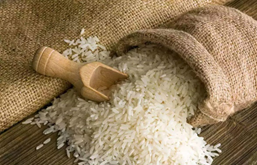

16th January 2023 (5 Topics)
Context
The Basmati rice, which has fluctuating prices and no MSP, offers hope as the best alternative to paddy and is seen as a commercial crop by the farmers in Punjab.
- Let us see the economics associated with Basmati in the region.

About the Basmati rice variety in India:
- Basmati, meaning ‘Queen of Fragrance’ is a variety of long-grain rice, famous for its fragrance and delicate flavour.
- Basmati rice has been reported in India since the early days of the 19th Century though it may have been named differently. Basmati is a variety of long-grain rice which is traditionally from India. It was also called Oryza Sativa.
- Indian Basmati Rice is famous worldwide for its quality and aroma.
- Varieties found: There are several varieties of basmati rice namely;
- 1121 Sella/Steam/Raw, Pusa Sella/Steam/Raw, Sugantha Sella/Steam/Raw, Sharbati Sella/Steam/Raw.
- Pusa & Sugantha is also called the name of super Kernel Basmati Rice.
- This rice is different from other rice mainly due to the aroma and elongation post-cooking. No other rice has this combined characteristic.
- The post-cooking elongation of more than twice its original length, the aroma and its sweet taste has made basmati rice a delicacy.
How much area could be increased under Basmati in Punjab?
- In Punjab, nearly 30-31 lakh hectares (74 to 76 lakh acres) are dedicated to the rice crop (in the Kharif season), out of which 25-26 lakh hectares come under paddy.
- The area under the Basmati crop has remained between 4-5 lakh hectares over the last several years.
- Basmati’s early and late varieties are sown between June and July and harvested in September and October.
- Rice exporters say there is a huge demand for Basmati, and the state has the potential to grow it in vast areas.
- It is estimated by experts that at least 10 lakh hectares could easily be brought under the Basmati crop in the state, which will help reduce the area under paddy.
Why do farmers prefer Basmati over paddy cultivation?
- Duration of crops: Punjab grows both short-duration and long-duration paddy varieties.
- The average yield of short and long-duration paddy varieties is around 28 and 36 quintals per acre, respectively.
- The average yield of these varieties is between 20 and 25 quintals per acre — which is 8-10 quintals less per acre as compared to paddy.
- Less water intensive:
- Experts say that 4,000 litres of water are required to grow a kilo of paddy.
- Basmati cultivation, on the other hand, is largely dependent on rainwater as it takes place during the main monsoon season.
- Basmati cultivation can also reduce stubble burning— farmers use its stubble for fodder.
- Less use of fertilisers: It hardly needs any pesticides.
- The state government bans the sale of around 10 pesticides during the Basmati-growing season for the past five years, which indicates that it does not need those chemicals.
How Basmati is procured?
- Paddy is procured by the Union government on MSP for distribution under the Public Distribution System.
- Basmati is neither procured by the government nor has any fixed price.
- It is procured by traders and exporters as Indian Basmati has large demand abroad.
Benefits of basmati cultivation for Punjab farmers:
- Basmati as a premier and heritage product of Punjab:
- It is known for its flavour, length and taste due to Punjab’s excellent weather, soil and irrigation (through the river and canal water).
- Also, Punjab is among the states and Union Territories (Haryana, Uttar Pradesh, Jammu and Kashmir, Himachal Pradesh and Uttarakhand are the others) that have a Geographical Indication (GI) tag for Basmati.
- The annual Basmati rice export from India is around 4 million tons (worth Rs. 36,000 crores), out of which Punjab contributes between 35 to 40 per cent.
Suggestive measures for Government interventions:
- A testing lab has already been set up in Amritsar to help farmers.
- The government is educating farmers about the judicious use of only authorised pesticides.
- Exporters also said that pesticides unregistered in the EU and the USA are freely available for sale in India, which needs to tighten regulatory control over the sale and distribution of such products.
Challenges:
- Overdependence on commercial crops
- less production of paddy and local rice varieties
- Maximum use of soil is an exploitative regime
- More exports can make a shortage of rice distribution for the poor.
- The advantage to exporters and middlemen as no MSP has been set up by the government



